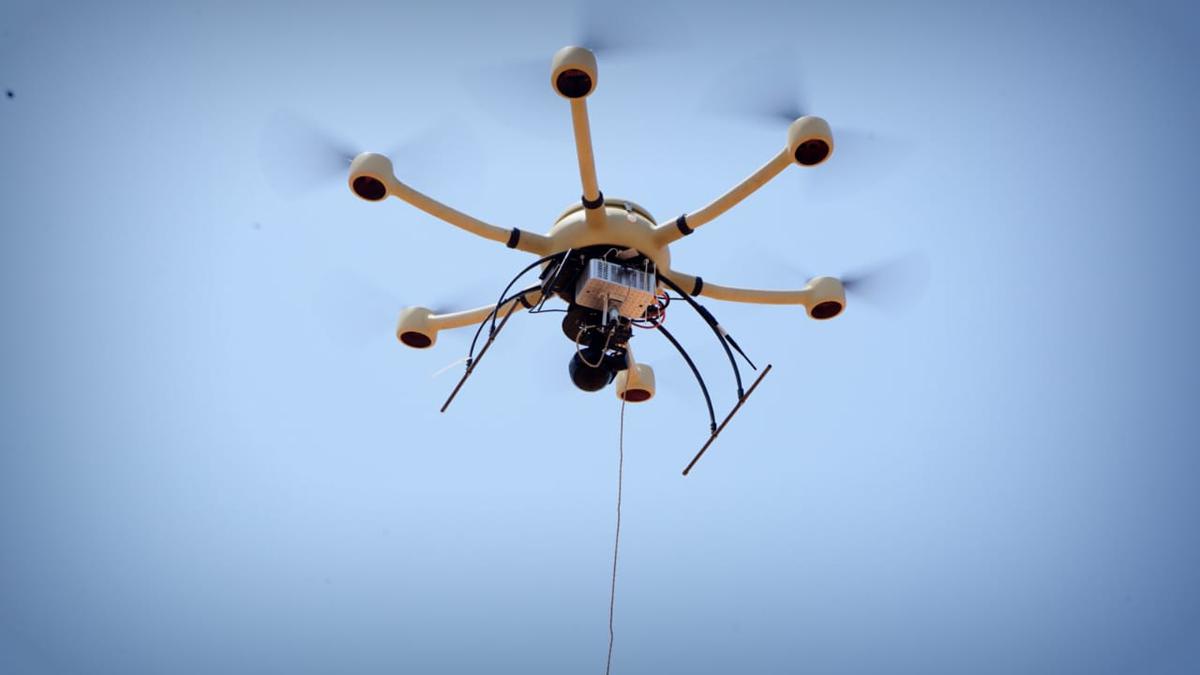
Anna varsity’s tethered unmanned aerial vehicle gets Indian patent
The Hindu
Anna University's invention, Tethered Aerial Platform, granted Indian patent for 20 years; capable of providing endless endurance, persistent surveillance, aerial observation, fire fighting, VVIP security & more.
Anna University’s invention, tethered aerial platform, has been granted an Indian patent.
Tethered aerial drone platform is an unmanned aerial vehicle tethered to the ground and power is supplied to the drone from the ground through a Kevlar-coated glass fiber cable. The innovation enables unlimited endurance, allowing the drone to carry out various activities without the constraints of battery limitations, said K. Senthil Kumar, professor and director, Dr. Kalam Advanced UAV Research Centre, CASR, Anna University.
The vehicle can also function as a hybrid system wherein the drone can be detached for free flight as well.
The team has been granted an Indian patent for pioneering the invention ‘Tethered Aerial Platform’. The patent is effective for 20 years from November 8, 2018.
The vehicle is capable of providing endless endurance, persistent surveillance and aerial observation for BVLOS ISR mission, as an antenna for telecommunication purposes to establish/increase the range and connectivity of a communication network, for fire fighting in high rise buildings etc., said Mr. Senthil Kumar, professor and inventor. The prototype of the system was displayed initially during Aero India 2017 at Bengaluru.
The technology has been deployed in the past six years in various situations like VVIP security, crowd surveillance and oil spill monitoring. It can be launched from shipboard, mobile ground vehicle, and fixed platforms.
The tethered aerial platform when attached to ground offensive vehicles will be a game-changer for the armed forces, revolutionising how we conduct tactical warfare, intelligence gathering, precision-guided munition strikes, air support to ground troops in a network centric operation, Mr. Senthil said. The technology holds the potential of becoming a force multiplier and as a low-cost solution to meet operational requirements minimise the loss of life among soldiers.











